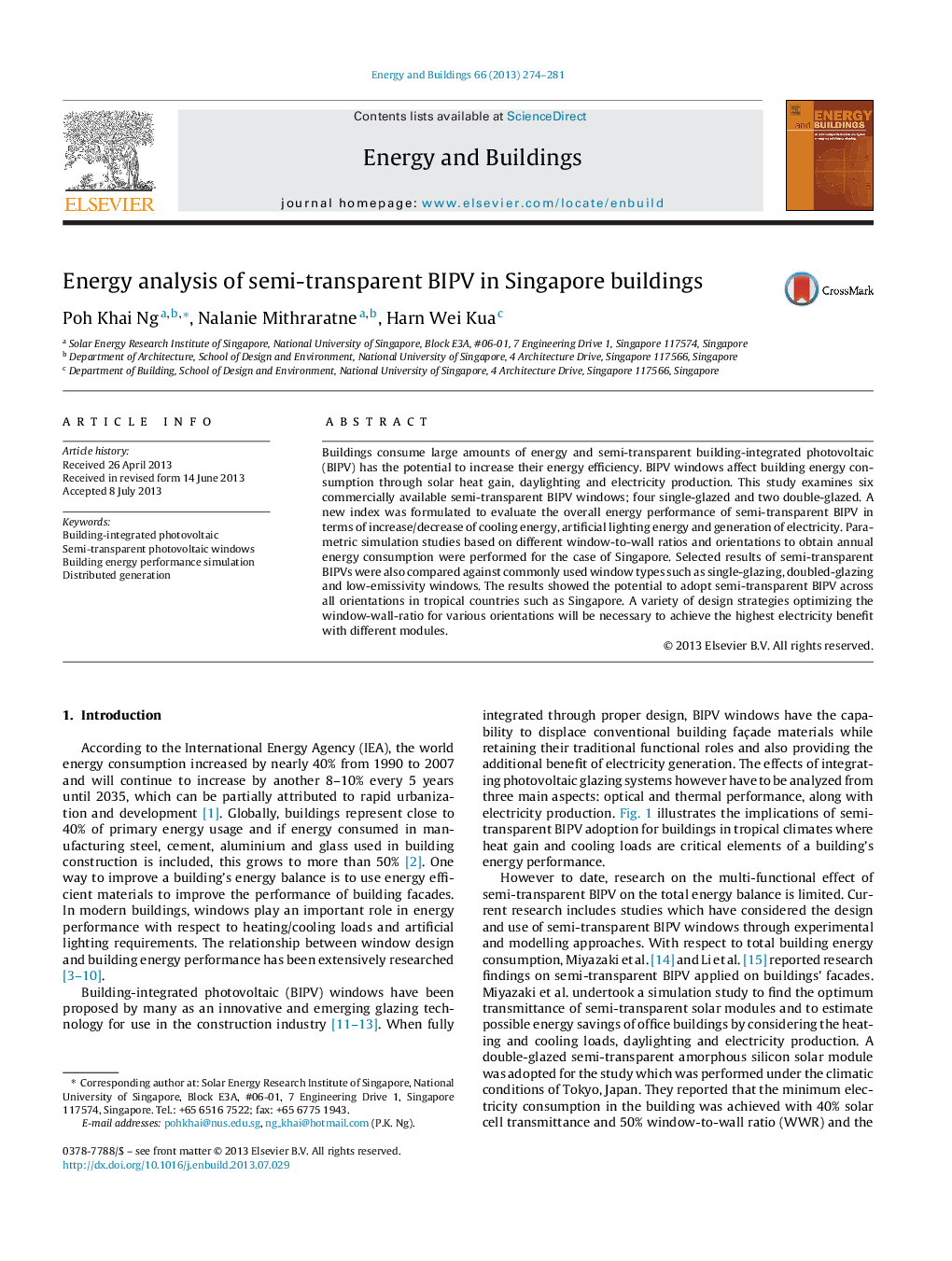| Article ID | Journal | Published Year | Pages | File Type |
|---|---|---|---|---|
| 6734614 | Energy and Buildings | 2013 | 8 Pages |
Abstract
Buildings consume large amounts of energy and semi-transparent building-integrated photovoltaic (BIPV) has the potential to increase their energy efficiency. BIPV windows affect building energy consumption through solar heat gain, daylighting and electricity production. This study examines six commercially available semi-transparent BIPV windows; four single-glazed and two double-glazed. A new index was formulated to evaluate the overall energy performance of semi-transparent BIPV in terms of increase/decrease of cooling energy, artificial lighting energy and generation of electricity. Parametric simulation studies based on different window-to-wall ratios and orientations to obtain annual energy consumption were performed for the case of Singapore. Selected results of semi-transparent BIPVs were also compared against commonly used window types such as single-glazing, doubled-glazing and low-emissivity windows. The results showed the potential to adopt semi-transparent BIPV across all orientations in tropical countries such as Singapore. A variety of design strategies optimizing the window-wall-ratio for various orientations will be necessary to achieve the highest electricity benefit with different modules.
Keywords
Related Topics
Physical Sciences and Engineering
Energy
Renewable Energy, Sustainability and the Environment
Authors
Poh Khai Ng, Nalanie Mithraratne, Harn Wei Kua,
